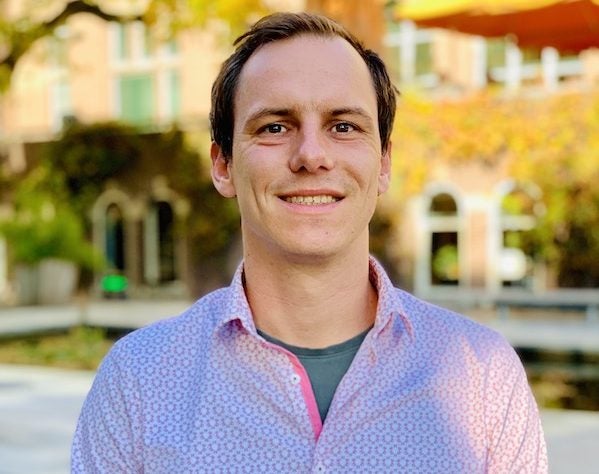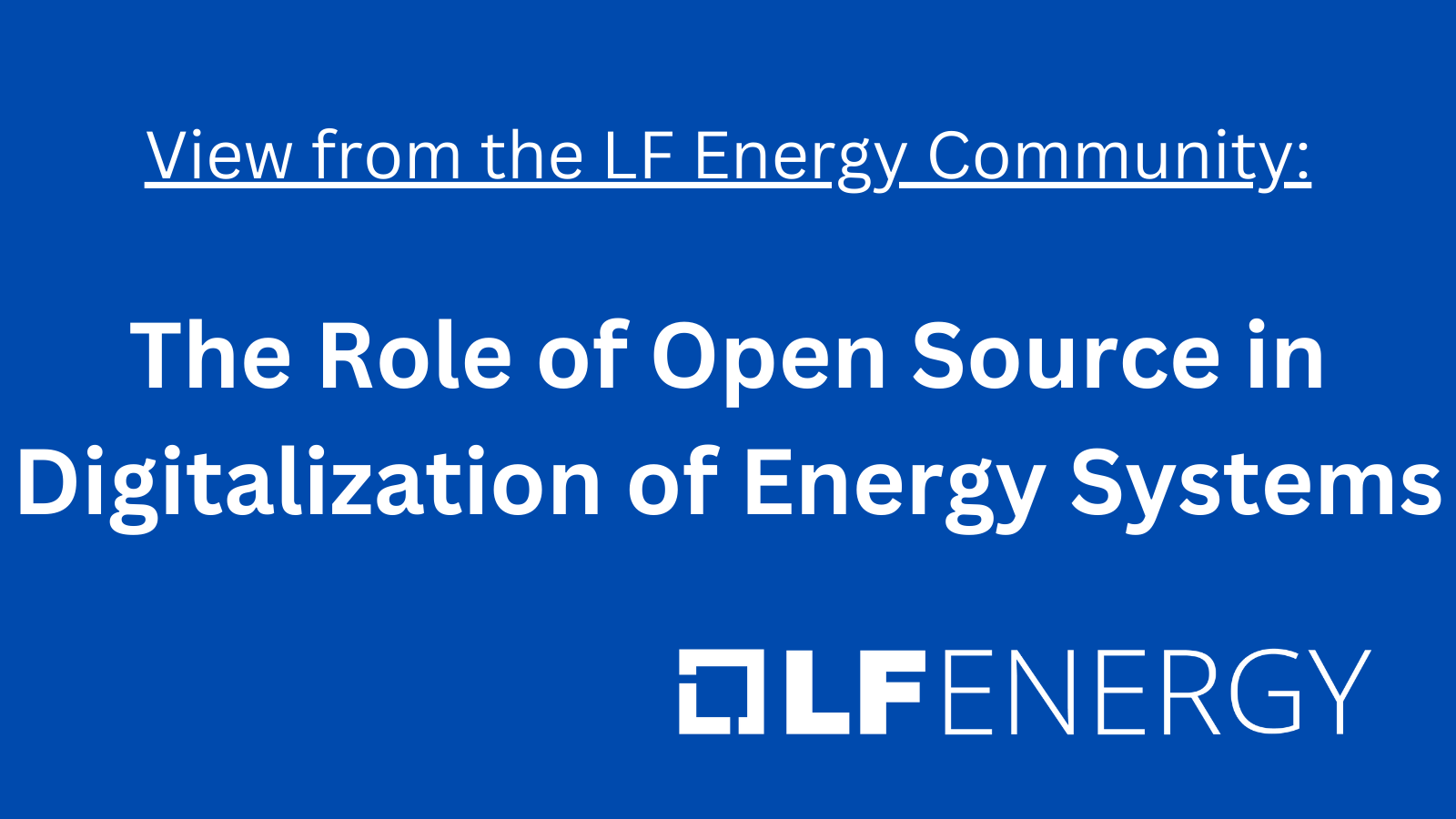View from the Community: The Role of Open Source in Digitalization of Energy Systems
This is the final article in a series exploring the technological challenges and solutions to achieving the goals of the energy transition. Drawing on the knowledge of experts from utilities, vendors, technology companies, and researchers in the Linux Foundation Energy community, this series explores the current state of technological evolution supporting the energy transition, as well as the most important trends, biggest challenges, and how to address them. If you have not already, you should review the previous articles in the series:
- The State of Digitalization of Energy Systems
- Challenges to the Digitalization of Energy Systems
- Technologies Driving Digitalization of Energy Systems
This article assesses the role of open source – including software, hardware, and standards – in digitalization of energy systems. The recent Energy Transition Readiness Study from LF Energy and LF Research found that for 64% of utilities, the majority of software they are already using is open source. Cost reduction and speeding the energy transition were the key benefits identified. However the study also found that barriers to more widespread adoption of open source include performance concerns, lack of support options, and security.
The LF Energy community was asked about why open source is important to digitalization of energy systems. Responses included discussion of what open source brings to the table, and also what is needed to encourage adoption.

Microsoft’s Dr. Audrey Lee
Many of the reasons for using open source to drive digitalization in energy systems forward are the same reasons that open source is widely used in countless other industries. “Speed, collaboration of stakeholders, affordability, and security,” were cited by Microsoft’s Dr. Audrey Lee, while Alliander’s Jonas van den Bogaard noted that “open source serves as a crucial catalyst for improving efficiency, accelerating time to market, and facilitating knowledge sharing.” AspenTech’s Mike Heinen added: “Open source enables the best minds to collaborate on the best software solutions. Inherent in the model of open source is that the best ideas, not the loudest voices or biggest pocketbooks, win at the end of the day.”
Others echoed these sentiments, such as Tamás Russ of SprintEins who stated that open source “makes the software more secure, less buggy and more accessible for the masses.” PIONIX’s Robert de Leeuw noted that “open source prevents waste of resources,” and Martijn Govers of Alliander highlighted the “fast and more extensive feedback” that accelerates innovation through open source.

WattCarbon’s Dr. McGee Young
Additional reasons cited for the importance of open source specifically in terms of the practices and goals of the energy sector, including being an “effective way to democratize energy” according to Chris Xie of Futurewei. Dr. McGee Young of WattCarbon noted that “the energy sector is a natural monopoly,” and that “open source ensures a level playing field for participating third party companies.” Dr. Antonello Monti of RWTH Aachen added that open source “is the fastest way to interoperability,” which is a key concern in the energy transition.
de Leeuw built on this by explaining that energy stakeholders in different geographies “can use the experience and software development by frontrunners” to improve their own systems as a key benefit of open source. Nicolas Höning of Seita Energy Flexibility noted that “fear of lock-in is removed,” and Govers added that since in energy there are “fewer solutions that work for a bigger set of use cases, open source can enable cheap and robust long-term solutions” be developed.

Seita’s Nicolas Höning
RTE’s Boris Dolley summarized the benefits of open source for energy systems by saying, “Future work will involve connecting industrial systems to end-users, who will become players in the power system. This is a first for industrial information systems, which are used to working alone between trusted players. There are no off-the-shelf products, no ready-made methods to meet future needs. We’ll have to build them quickly, but step by step. In this case, what better way than open source?”
As noted by Alliander’s Maarten Mulder, “If we want to accelerate solutions, open source is a great enabler.” The community discussed what is needed to actually accelerate open source innovation, and provided many high level thoughts:
- “Greater levels of collaboration and openness between ‘digitizers’ and ‘regulators’ as well as between ‘digitizers’ and ‘users’.” -Heinen
- “Large-scale collaboration and commercial entities introducing new market models.” -Mulder
- “Open standards and real-world deployments to serve as examples.” -Höning
- “Leading projects that show how it is done.” -Russ
- “Enablement of data sharing and third party technologies.” -Young
- “Increased focus on collaborations and partnerships to enhance efficiency, time to market and knowledge sharing.” -van den Bogaard
There was also some discussion of how open source can disrupt the energy sector in a positive way. Xie noted that there are “key disruptions to energy consumption and production” that can be facilitated by open source. Govers advised that, “To prevent users from having to worry about digital transformation, devices themselves should be automated by their creators. Companies creating electronic devices should be part of the community as stakeholders and users of energy digitalization. Fallbacks – both electronically automated and mechanical – should be implemented better.”

RWTH Aachen’s Dr. Antonello Monti
This disruption will require more work if it is truly going to transform energy systems. Getting there means building a larger community, and Monti suggests starting early, by “engaging the younger generation in energy topics.”
Across the four articles in this series, we have explored the current state of digitalization of energy systems, the challenges that exist, how technology trends are driving this process forward, and the role open source has to play. In summary, we have a long way to go, but open source technologies can help achieve the goals of the energy transition and decarbonize power systems. The playbook is a well worn one, with open source speeding innovation, reducing costs, building a larger ecosystem of solutions, removing lock-in, and ensuring interoperability. To achieve this, it will be necessary to further grow the community with a variety of stakeholders, learning from the successes of existing open source communities, and sharing knowledge and data collaboratively. We encourage you to get involved, whether through LF Energy or other open source initiatives. The LF Energy Landscape, which pulls data from the Open Sustainable Technology project, is a great resource to learn more about the ecosystem, and identify areas where you can make a difference.
